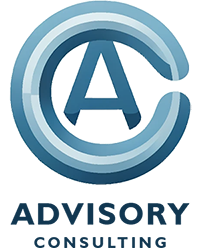Understanding Flat vs Hierarchical Structures for Strategic Consulting
 by Consultant
by Consultant

In the world of business and management, the structure of an organization is a crucial aspect that can greatly impact its success. Two common structures that are often compared are flat and hierarchical structures. Each has its own unique characteristics and can be suitable for different types of businesses. In this article, we will delve deeper into the differences between these two structures and their implications for strategic consulting. Whether you are a consultant or a business owner, understanding the intricacies of these structures can greatly benefit your organizational strategy. So, let’s explore the world of flat and hierarchical structures and see how they can shape the way businesses operate.
To start, let’s define what flat and hierarchical structures are. A flat structure, also known as a horizontal structure, is characterized by having few levels of management and a wide span of control. This means that there are fewer layers of authority and employees have more autonomy and responsibility. On the other hand, a hierarchical structure, also known as a vertical structure, has multiple levels of management with a narrow span of control. This means that there are many layers of authority and employees have less autonomy and more supervision.
So why does this matter in strategic consulting? Well, the type of organizational structure a business has can greatly impact its ability to develop and implement effective strategies. For example, a flat structure may be more conducive to fostering innovation and adaptability, while a hierarchical structure may provide more stability and control. Understanding these differences can help you guide businesses towards the best structure for their specific goals and needs.
Implementing Strategic Solutions
When it comes to developing and implementing strategic solutions, the chosen organizational structure can greatly impact their success. This is because different structures have different communication channels, decision-making processes, and levels of hierarchy, which can all affect how strategies are developed and executed.
In a flat structure, where there are fewer layers of management and a more decentralized decision-making process, strategic solutions may be implemented more quickly as there is less bureaucracy and red tape. However, this can also lead to a lack of coordination and clarity, as well as potential conflicts between departments or teams.
On the other hand, in a hierarchical structure, where there are clear lines of authority and decision-making power lies at the top, strategic solutions may take longer to be implemented as they need to go through multiple levels of approval. However, this structure can also provide a more cohesive and coordinated approach to implementing strategies.
Ultimately, the success of strategic solutions depends on finding the right balance between these two structures and tailoring them to fit the specific needs and goals of the organization. By understanding the strengths and weaknesses of each structure, management consultants can help businesses make informed decisions on which one will be most effective for their strategic initiatives.
Impact on Strategic Planning
The organizational structure of a company is a crucial aspect that can have a significant impact on strategic planning. It refers to how the roles, responsibilities, and power are distributed within the organization. A flat structure is characterized by few levels of management and a wide span of control, whereas a hierarchical structure has multiple levels of management with a narrow span of control.
When it comes to strategic planning, the organizational structure can affect the decision-making process, communication, and overall efficiency. In a flat structure, there is less bureaucracy and a more open flow of communication between employees and management. This can lead to faster decision-making and implementation of strategic plans. On the other hand, a hierarchical structure may have more layers of approval and slower communication, which can delay the strategic planning process.
The type of organizational structure can also influence the strategic goals and objectives set by a company. In a flat structure, there is usually a focus on collaboration and teamwork, which can lead to more innovative and creative strategies. In contrast, a hierarchical structure may prioritize stability and control, resulting in more conservative and traditional strategic plans.
In addition to these differences, the organizational structure can also impact the alignment and execution of strategic plans. In a flat structure, employees may have more autonomy and ownership over their work, which can result in better alignment with the company’s overall goals. However, in a hierarchical structure, employees may feel disconnected from the decision-making process and less motivated to execute the strategic plans.
In conclusion, understanding the different organizational structures is crucial for management consultants when developing effective business strategies. The type of structure can greatly influence the decision-making process, communication, goals, and execution of strategic plans. By considering the strengths and weaknesses of both flat and hierarchical structures, consultants can determine which one best fits their client’s needs for successful strategic planning.
Choosing the Right Structure
When it comes to recommending a flat or hierarchical structure for a business, there are several factors that must be carefully considered. These factors include the size of the organization, its goals and objectives, the industry it operates in, and the company culture. Each of these elements plays a crucial role in determining which structure would be most effective for developing and implementing strategic solutions.
First and foremost, the size of the organization can greatly impact the success of a flat or hierarchical structure. Flat structures are typically better suited for smaller businesses with fewer employees, as they allow for a more collaborative and agile approach to decision-making. On the other hand, hierarchical structures tend to work better for larger organizations with multiple layers of management and a clear chain of command.
The goals and objectives of the business also play a significant role in determining the right structure. If the company is looking to innovate and adapt quickly to changing market conditions, a flat structure may be more suitable. However, if stability and consistency are the main priorities, a hierarchical structure may be a better fit.
The industry in which the business operates can also influence the choice of structure. For industries that require quick decision-making and constant adaptation, such as technology or fashion, a flat structure may be more appropriate. In contrast, industries that require strict compliance and adherence to established processes, such as healthcare or finance, may benefit from a hierarchical structure.
Lastly, the company culture should also be taken into consideration when recommending a structure. A flat structure requires a high level of trust and communication among team members, while a hierarchical structure relies heavily on authority and clear roles and responsibilities. It’s essential to assess whether the company’s culture supports and aligns with the chosen structure.
In conclusion, understanding the differences between flat and hierarchical structures is crucial for strategic consulting. By considering the impact on strategic planning, choosing the right structure, and implementing strategic solutions, you can guide businesses towards the best structure for their goals and needs. Remember to assess each business individually and consider their unique circumstances before making a recommendation. With this knowledge, you can help businesses improve their strategy and achieve their desired outcomes.
Related Posts
Learn about the differences between flat and hierarchical structures and how they impact strategic consulting. Discover which structure is best for developing and implementing effective business strategies.
Business Consulting Articles
- About cookies and cookie consent
- Advisory Consulting
- Business Growth Consulting | Unlocking Your Business Potential
- Business Process Consulting Services Can Improve Your Business
- Organizational Development Consultant
- Privacy Policy
- Strategic Advisory Services Explained: A Comprehensive Guide
- Top 100 Advisory Consulting Terminology
- Top 100 AI as a Service (AIaaS) Terminology
- Top 100 Business Consulting Terminology
- Top 100 Executive Coaching Terminology
- Top 100 Operation Management Terminology
- Top Advisory Consulting Terminology
- Top AI as a Service (AIaaS) Terminology
- Top Business Consulting Terminology
- Top Executive Coaching Terminology
- Top Operation Management Terminology
- AI Generated Q&As
- Benefits of advisory consulting
- Blog
- Boutique Firms
- Budgeting
- Business advisory consulting
- Business Consulting
- Business consulting services
- Business Management
- Business planning
- Case studies on specific industries
- CEO
- CFO
- Change management
- CIO
- Client success stories
- CMO
- Collaboration and partnerships
- Consulting
- COO
- Creative thinking
- Critical thinking skills
- Culture and values
- Executive Coaching
- Expert guidance and insights
- Financial advisory consulting
- Financial analysis
- Financial consulting
- Financial Consulting
- Financial consulting services
- Financial strategies
- Fractional Executive
- Goal setting
- Human Resource Management
- Increased efficiency and profitability
- Industry knowledge and experience
- Insight
- Investing
- IT Consulting
- Leadership and management
- Leadership styles
- Management Consulting
- Management Consulting
- Market analysis
- Market analysis
- Marketing consulting
- Marketing strategies
- Marketing strategies
- Methodologies
- Operational strategies
- Organizational structure
- Process improvement
- Professional qualifications and certifications
- Retirement planning
- Risk analysis
- Risk management and compliance
- Sales techniques
- Scaling and expansion
- Strategic consulting
- Strategic foresight
- Team diversity and collaboration
- Technology advisory consulting
- Technology consulting services
- Technology solutions
- Testimonials from satisfied clients
- Tier 1 Firms
- Tier 2 Firms
- Vision and direction
- What is Advisory?
- What is Consulting?
